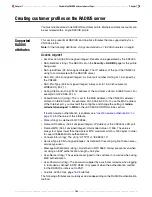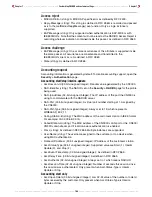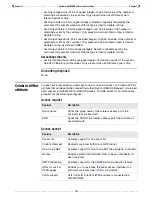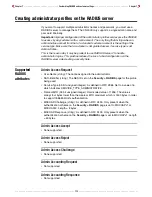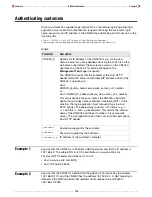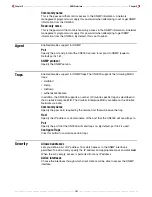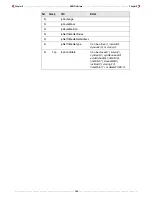
Chapter 8 - - - - - - - - - - - - - - - - - - - - - - - - - - - - - - - - - - - - - - NOC authentication - - - - - - - - - - - - - - - - - - - - - - - - - - - - - - - - - - - - - - Chapter 8
- - - - - - - - - - - - - - - - - - - - - - - - - - - - - - - - - - - - - - - - - - - - - - - - - - - 177 - - - - - - - - - - - - - - - - - - - - - - - - - - - - - - - - - - - - - - - - - - - - - - - - - - -
How it works
The NOC authentication feature provides a secure way of authenticating public access
customers, with strong mutual authentication between the login application on the web
server hosting the remote login page and the CN3000 used for authenticating customer
logins. This occurs via the two Colubris-AVPair value strings (
ssl-noc-certificate
and
ssl-noc-ca-certificate
), which define the locations of two certificates. These certificates
enable the CN3000 to validate that the customer login information does indeed come
from a trusted application. For example, from a login application on the web server.
The following diagram shows the sequence of events for a typical customer session
when using the NOC-based authentication feature.
CN3000
RADIUS server
Customer
Non-authenticated
customer attempts to
browse an external
Web site via the WLAN.
Web browser is redirected.
Request is intercepted.
Web server hosting
remote login page
Login application sends
login page.
Customer logs in.
Customer login info is
sent for authentication.
Login info is sent
to RADIUS server.
Login approved.
Customer configuration
settings are returned.
Login application sends
the Welcome page
with URL of originally
requested web site.
Login application initiates
an SSL connection with
the CN3000.
The login application's
SSL certificate is verified.
If valid, approves connection.
Login results message
is returned to the login
application.
.
Service Announcement
page is returned.
Customer clicks to
continue.
Summary of Contents for CN3000
Page 1: ...CN3000 Administrator s Guide...
Page 8: ...Table of Contents 8...
Page 60: ...Chapter 2 How it works Chapter 2 60...
Page 94: ...Chapter 4 Scenarios Chapter 4 94...
Page 106: ...Chapter 5 Activating the public access interface Chapter 5 106...
Page 211: ...Chapter 10 SSL certificates Chapter 10 211...
Page 292: ...Chapter 13 The configuration file Chapter 13 292...
Page 370: ...Chapter 16 Sample setup Microsoft RADIUS Chapter 16 370...
Page 396: ...Chapter 16 Sample setup Microsoft RADIUS Chapter 16 396...
Page 414: ...Chapter 17 Experimenting with NOC authentication Chapter 17 414...


